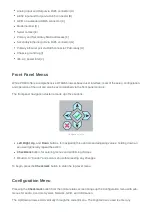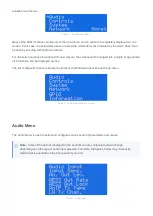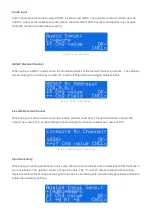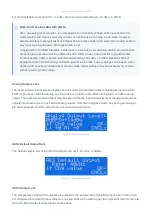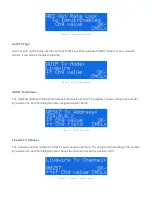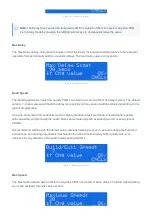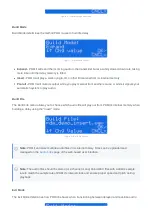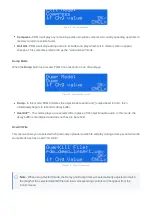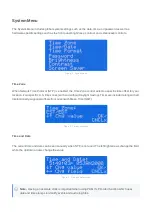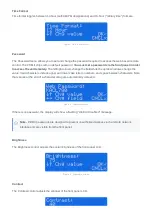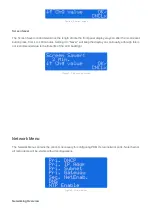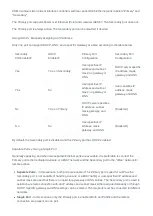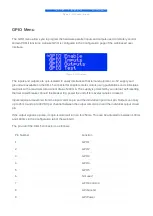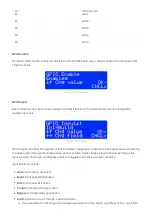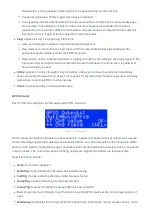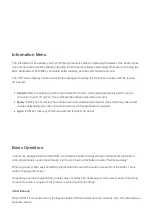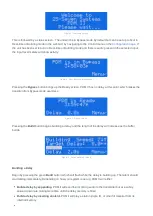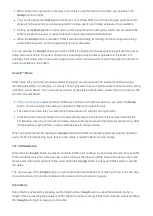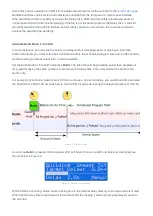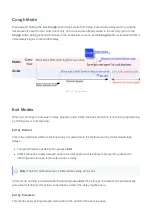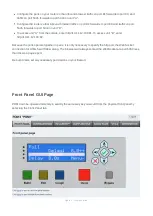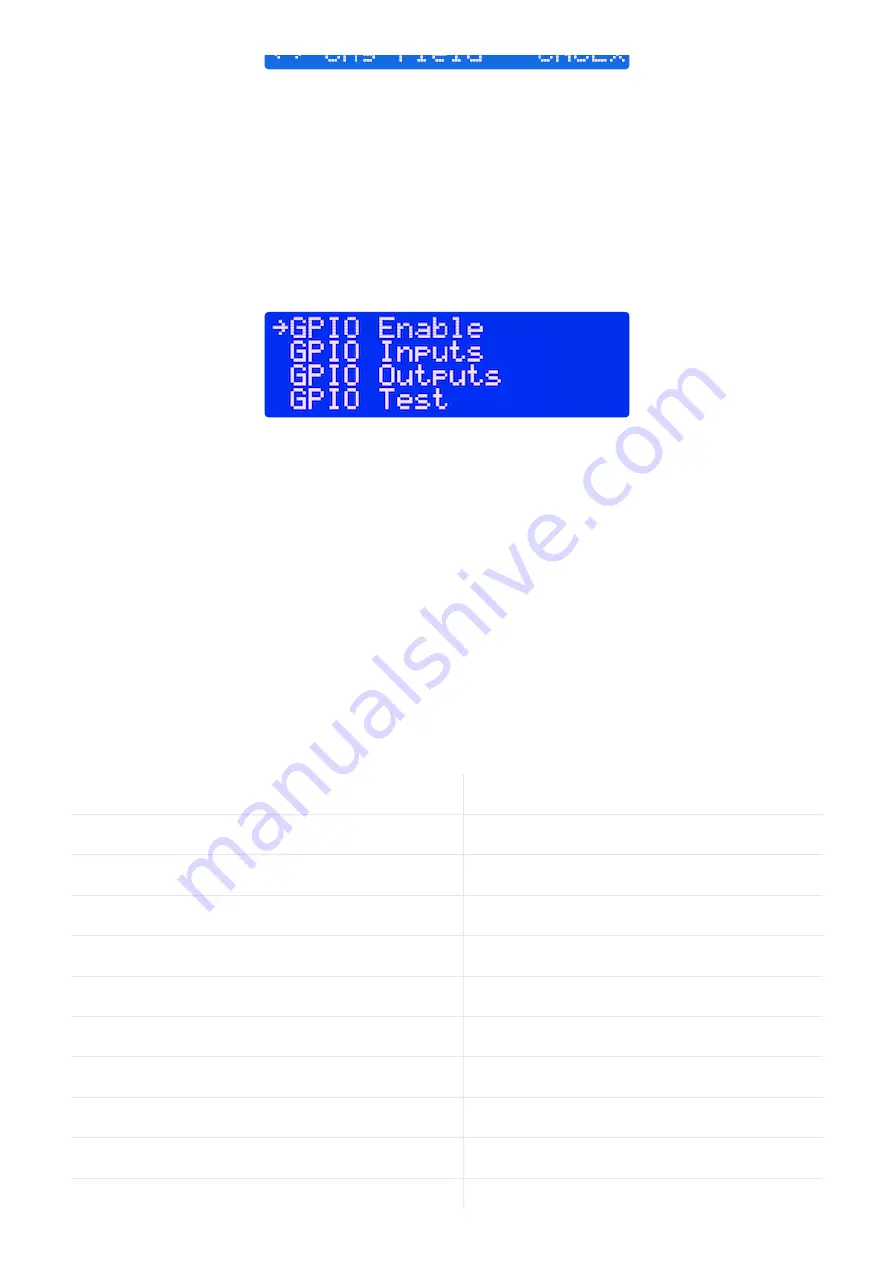
Figure 4 - NTP server screen.
GPIO Menu
The GPIO menu allows you to program the hardware parallel inputs and outputs used to remotely control
certain PDM II functions. Livewire GPIO is configured in the Configuration page of the web-based user
interface.
Figure 1 - GPIO menu
The inputs and outputs are opto-isolated to easily interface with external equipment. A +5V supply and
ground are available on the DB-15 connector for simple remote controls using pushbuttons and LED status
readouts with a maximum total current draw of 200 mA. The supply is protected by an internal, self-resetting
thermal circuit breaker; should the breaker trip, power the unit off for several minutes to reset it.
Inputs require at least 6mA from the input common pin and the individual input circuit pin. Outputs can carry
up to 25 mA and up to 30VDC per channel between the output common pin and the individual output circuit
pin.
If the output signal is a pulse, its opto-isolator will turn on for 250ms. This can be adjusted to between 100ms
and 1000ms in the Configuration tab of the web GUI.
The pin-out of the DB-15 connector is as follows:
Pin Number
Function
1
GPO 1
2
GPO 2
3
GPO 3
4
GPO 4
5
GPO 5
6
Not used
7
GPO Common
8
GPI Ground
9
GPI Power

